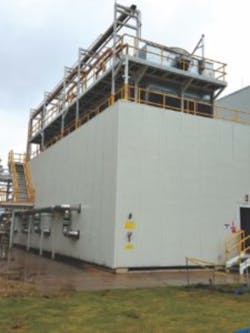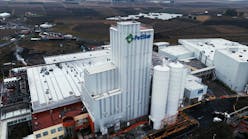In many parts of the world, water has resulted in social and economic upheaval. As such, there are mixed reactions to the industrial use of water. Some people react with trust in the industry and assume that it will use water responsibly while complying with environmental regulations. Other people have a more skeptical view of industry and its relationship to environmental responsibility.
The manufacturing process for most goods requires a lot of water. Many businesses comply with national, state and local environmental protection guidelines. But merely complying with guidelines is not enough to sustain our decreasing water supplies.
Methods to maximize reuse as well as recycle within industrial processes is of vital importance. Industry leaders recognize this and act on it. One of the major applications of freshwater supply in industrial processes involves cooling, and the most common cooling media used in industrial processes is water. Its high heat capacity and low cost make it a highly suitable and desirable heattransfer medium.
Effects of water source impurities on circulating water systems and cooling tower efficiency
As water is transported through industrial cooling equipment, dissolved matter is concentrated. It also picks up particulate impurities from the contacting surfaces. The primary aim of the water treatment and industrial unit operations is to minimize or eliminate such carryover, prevent corrosion and scale formation, and obtain maximum service life from the equipment, such as heat exchangers and cooling towers.
While performing basic design and layout of any industrial facility that uses water as its cooling medium, evaluation of the water supply should be done as early as possible.
Evaluation of such factors typically involves obtaining detailed analysis of various constituents in the water supply, predicting and estimating design operating conditions and calculations of various scaling indices. It is advisable to obtain services of a water treatment expert in such evaluations. In addition to providing design and operating recommendations, water treatment experts can also recommend how many cycles of concentration can be safely employed for a given application. It is recognized that without establishing the design and operating guidelines, severe corrosion and scaling of the facility equipment can occur, and the majority of cases results in extreme financial losses in terms of equipment, downtime and lost time in production.
As water is transported through the facility and into cooling towers, soluble dissolved matter is concentrated. Particulate contamination is also present. Evaporative cooling in cooling towers is the most economical method of transporting heat away from process equipment. This is achieved by spraying water over the pack bed media and allowing the sprayed water droplets to come in intimate contact with the flow of air in the opposite direction. As the air comes in contact with water, evaporation occurs, and through this latent heat transfer, cooling takes place.
Evaporative cooling in cooling towers is the most economical method of transporting heat away from process equipment.
Most towers are packed with a "fill," which is an arrangement of slats, bars or plates to provide multiple contacting surfaces and improve the tower efficiency. For each pound of water evaporated, we remove 1,000 Btu (British thermal units) heat load, and the temperature of the remaining water is lowered by 10°F, so the classic rule of thumb is 1 percent evaporation loss for each 10°F cooling.
Depending on the quality of water available, each facility will experience varying degrees of operating challenges. Available water may be a surface water source, such as a lake, river or reservoir, or it may be groundwater, such as deep bore well brackish water with high mineral content. Use of high mineral content in the source water can result in scale formation on heat exchange surfaces; conversely, the use of low mineral content water can result in corrosive conditions in the water transport and heat exchange equipment.
In most applications, makeup water is added to the circulating water, which is equal to the evaporation and drift loss, meaning the systems are rarely "oncethrough" type. The chemical properties of circulating water are therefore evaluated on the basis of cycles of concentration (COC).
The facilities also experience wide seasonal variations such as fluctuating ambient temperature and rainfall. These variations also affect the water chemistry. It is essential that the effects of such seasonal variations are considered while designing the cooling water systems. This is commonly facilitated by conducting water analysis at different times of the year.
Ideally, no single parameter should dominate at the beginning of the evaluation process; rather, all critical parameters shall be evaluated by conducting COC calculations, and the most limiting parameter should control the design basis COC.
Cooling tower water treatment
Critical parameters and properties of circulating water that affect the cooling water systems are hardness, chloride, alkalinity, pH and temperature, as well as scaling indices. In the majority of cases, operators tend to monitor conductivity in the cooling tower sump and use this parameter to control the blowdown from the system.
The chemistry of the circulating water is critical in maintaining high operating efficiency of the cooling system and long equipment life.
In the cooling tower water treatment system, the two main objectives are: 1) prevent fouling, scaling and corrosion of the equipment and 2) prevent loss of equipment functionality.
The term "fouling" is used to describe microbio fouling and is accelerated in the presence of suspended particulate matter. Such fouling can give rise to a biohazard including release of diseasecausing bacteria such as Legionella. It can also produce objectionable odors downstream and induce corrosion in the piping and sumps.
The term "scale" is used to describe precipitation of dissolved matter, namely calcium hardness from the circulating water. This can affect the operating efficiency and, in extreme cases, can result in equipment failure. The main factors affecting the rate of formation are temperature, pH and dissolved solids. Scale formation can be prevented by pretreatment of raw water by filtration and softening to maintain scaling index to the slightly positive side, as well as crystal modifying chemical treatment of the circulating water. The chemistry of the circulating water is critical in maintaining high operating efficiency of the cooling system and long equipment life.
Scaling indexes for cooling tower water
This is the most important parameter in establishing required circulating water chemistry. The scaling indices were developed for specifying and controlling circulating water chemistry for cooling towers and shell and tube heat exchangers. The three main indices are: Puckorius (or practical) scaling index (PSI), Ryznar scaling index (RSI), and Langelier saturation index (LSI).
Biological treatment for cooling towers
Biocide treatment is required for all cooling tower installations. The biocide treatment program that can include oxidizing as well as nonoxidizing treatment ensures a continuously free residual and thereby negates or controls the microbio growth and proliferation. The disinfectants used must follow local, state and federal standards and regulations.
Reuse from wastewater streams
To minimize the amount of freshwater usage, various facility-specific wastewater streams can be identified as cooling water makeup without sacrificing the operational flexibility or equipment life. When properly identified and pretreated, such wastewater streams can be a great source for cooling tower makeup water. In this way, water use from a freshwater source could be minimized or, in some cases, completely eliminated. Such wastewater streams are boiler blowdown, filter backwash wastewater, stormwater, process rinse water, equipment and floor washdowns and lastly, recycled treated wastewater from publicly owned water treatment plants.
Summary
The conditions and limits described here are the preferred limits for cooling tower operation. These limits are provided with explanatory qualifying notes and as guidance only, and these should be individually vetted for each facility design. By employing these limits and required due diligence, facility designers and operators can implement water conservation methods.
Note: This article is the first part of a two-part series on water conservation for industrial systems. Read Part 2 “Cooling Tower Water Systems” featured in the January/February 2018 issue of Water Technology.
REFERENCES
- The NALCO Water Handbook, Second Edition, McGraw-Hill Publishing Company.
- Industrial Water Conditioning – Betz Handbook, Ninth Edition, 1991.
- Reverse Osmosis – Practical Guide to Industrial Users, Second Edition, Wes Byrne.
- Environmental Chemistry, Fourth Edition, A.K. De.
Ganesh Kamatkar is senior water technology specialist at Air Liquide North America. He is a chemical engineer with more than 20 years of experience in water and wastewater treatment plants, design and engineering. His experience involves ion exchange, reverse osmosis, ultrafiltration, sea water desalination, produced water treatment, recycle/reuse water projects and integrated zero liquid discharge plants involving ion exchange and membrane systems.




